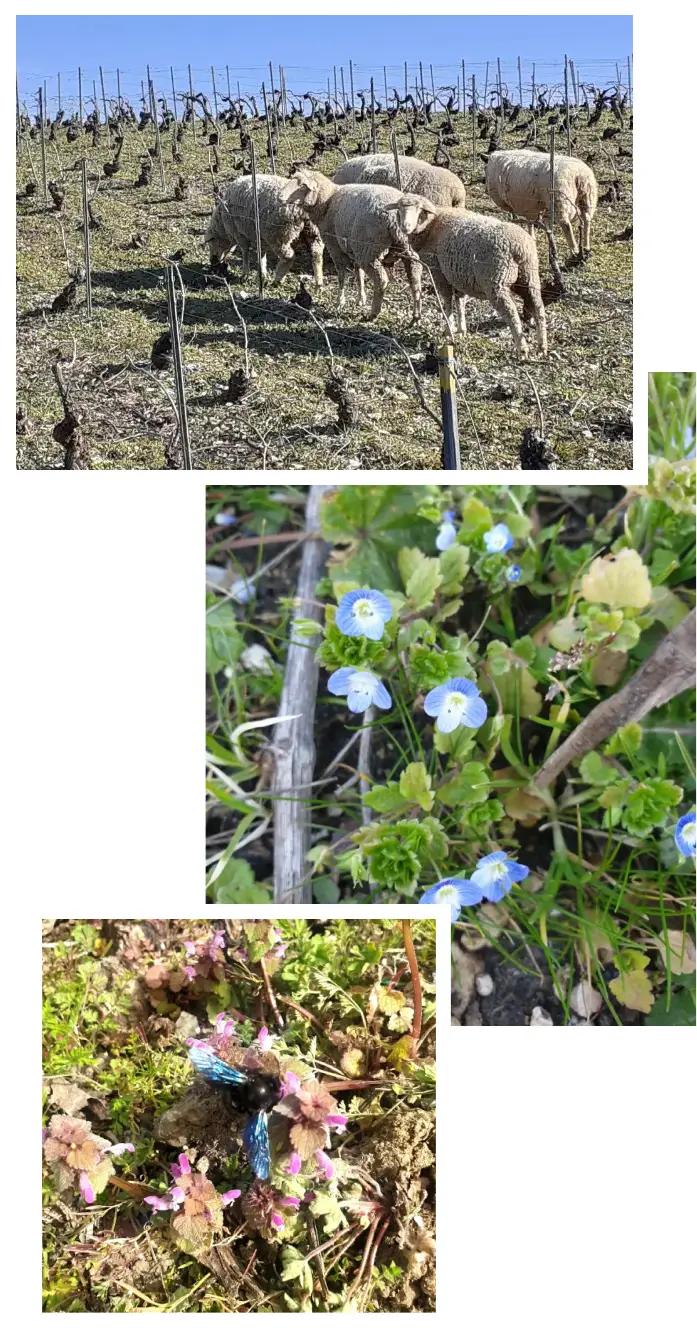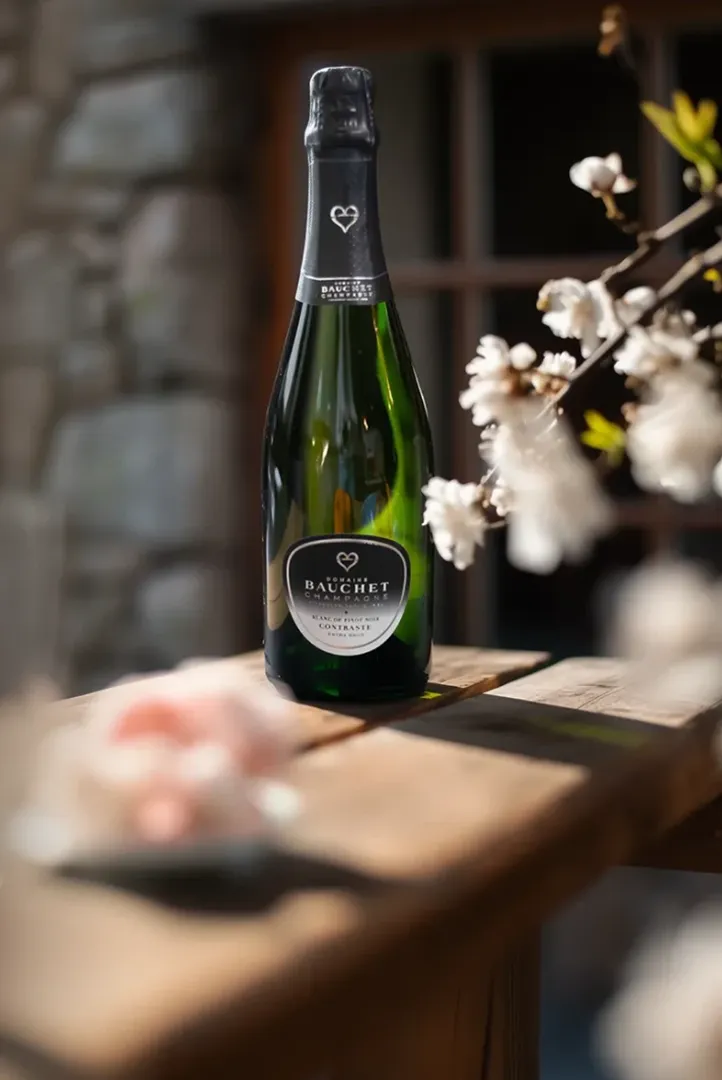
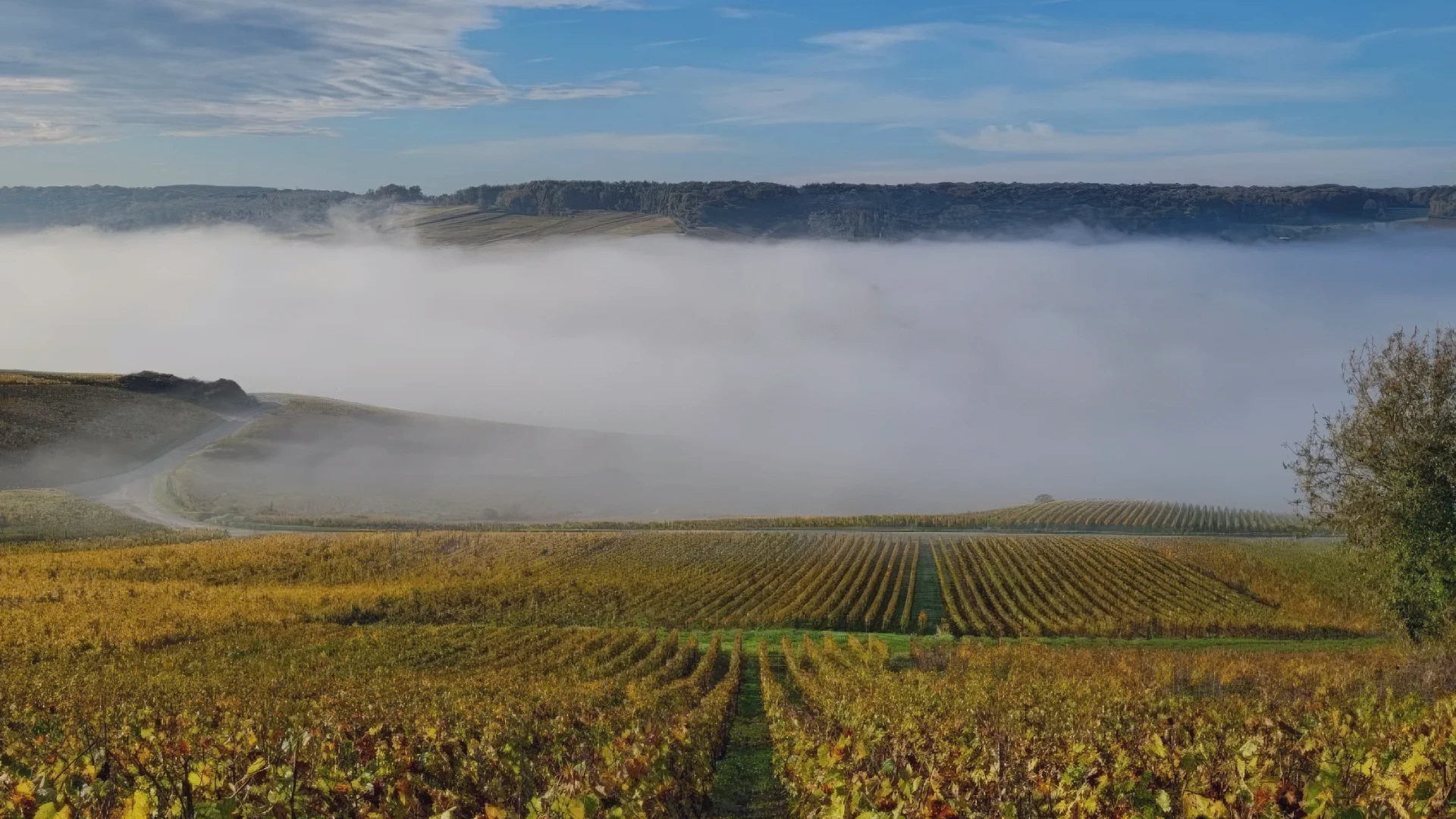
Our outstanding Terroir
A mosaic of terroirs
A REMARCABLE SPREAD OF VINEYARDS IN CHAMPAGNE
Our estate of more than 33 hectares stretches across the terroirs of the Côte des Blancs, the Montagne de Reims and the Côte des Bar (Bar Séquanais and Bar sur Aubois). 9 hectares of Premier Cru are situated in Grauves (Côte des Blancs), and in Bisseuil (Montagne de Reims). Chardonnay covers the whole of the Grauves vineyards, and most of Bisseuil’s, leaving some areas to the Pinot Noir. 25 hectares, almost exclusively with Pinot, flourish in the Côte des Bar, in Bar sur Seine, Bragelone-Beauvoir (close to the Riceys), in Saulcy, Vitry le Croisé and Bligny.
The vineyards spread over 52 parcelles among which 15 ilets with exceptional typicities, of more than 2 hectares on average, and represent 12 types of different soils. Large parcelles dominate and monopolise in certain places: “les Lobards” in Bisseuil, «Adroit de Mignier» in Bragelone Beauvoir and the « Côte de l’étang » in Bligny. 10 hectares of the Bar sur Aubois are in a protected area Natura 2000.
1.8 hectares of “Moulins Babeaux” symbolizing the birthplace of the Bauchet family in Grauves - 0.4 hectares in “Chaudion”, the only Pinot Noir parcelle in Bisseuil, till the “Clairières du Val Puisard” – 3.6 hectares – representing 50% of the vineyards of the Côteau de Bar sur Seine. This outstanding terroir constitutes a large patrimony of vineyards, grape varieties, woods and fallow fields. A unique mosaic in the Champagne area for an owner, harvester and handler, giving him a rich and diversified palette allowing us to elaborate the blends of our estate.
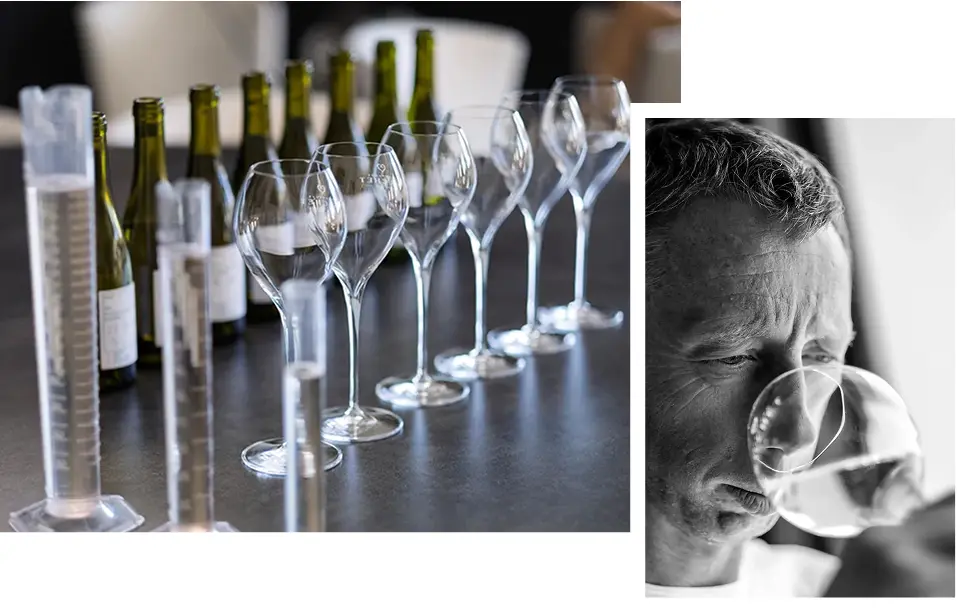
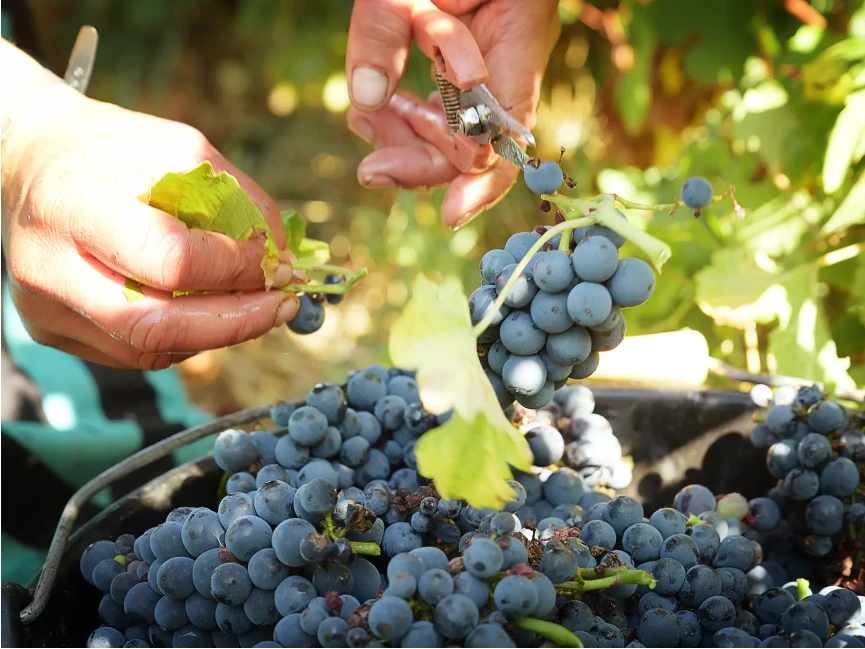
From the vineyards to the flute – a mastered pre-eminence
The Art of blending
Before the grape-picking starts, the maturity of the different parcelles is individually monitored, to decide the best moment to harvest. Some sorting out is done at the vineyards and at the pressoir, through tasting the juice and the grapes. Pressing is done slowly and gently with separation of the different qualities of the heart of the cuvées (the juice of the first pressing). Only the best juices are used when developing our champagnes.
For our non-vintage Cuvées Brut a pre-blending of the different grape varieties and terroirs is performed before fermentation. This way we multiply the possibilities and complexify the exchanges before we let the magic of the alcoholic fermentation and the action of the yeasts operate on musts of different origins. Only a perfect knowledge of the terroir allows blending grapes and grape juices. After fermentation tasting makes it possible to finalise the blends with reserve wines.
Our oenologist cellar-master manages perfectly fermentations and temperatures in relation to the different materials. Thermo-regulated stainless steel vats, because of their neutrality, preserve the typicity of the terroirs and grape varieties. The large casks and barrels are used on the basic principle of the spices counter: the aromatic diversity resulting from a subtle oxidisation and exchanges with the wood, brings structure, fat and body to the wines.
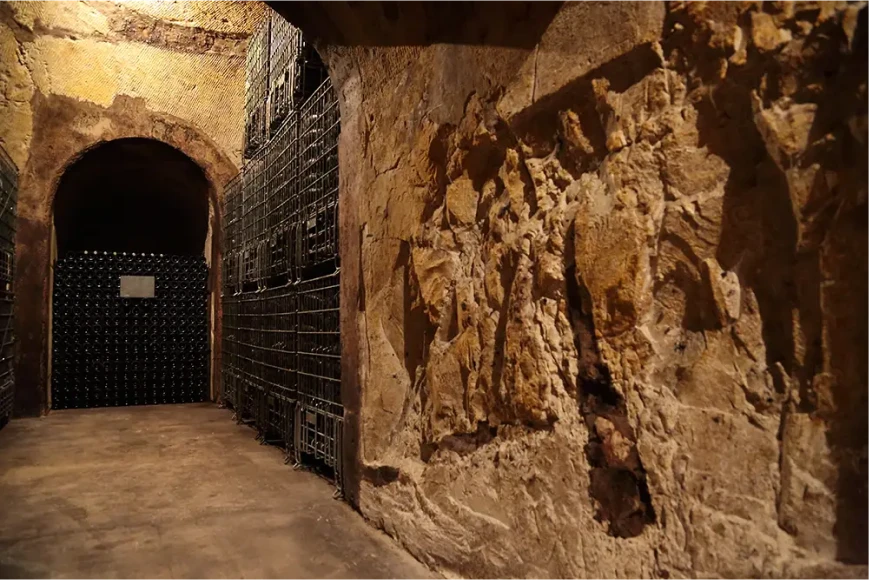
250 metres of cellars, dug out in the Chalky soils of Bisseuil, give the different cuvées the peace and ideal constant temperature needed for the development of the mousse and for a log aging process, going from a minimum of 30 month to 5 years for the vintages.
Having reached their maturity, they are riddled, disgorged and given a dosage of a liqueur created by our Cellar-Master. Three months of finish are still necessary before the bottles are labelled and packed.
To allow better fluidity, reactivity and control of the traceability, all these different stages in the elaboration process are performed in our house itself by qualified staff.
Work in the vineyards: pressing, fermentation, bottling, disgorging, labelling, all this is perfectly harmonised so that we keep total control of the procedure in complete autonomy. The buildings and equipment go through a maintenance process, to ensure perfect hygiene. From the vineyards to the flute, grapes are rigorously traced and each bottle carries a precise identification guaranteeing its quality.
Our sustainable commitment
Towards respectful and responsible grape-cultivation methods
Our House commits itself towards a concept of respect of the environment. Soils are respected; each terroir is different and calls for a specific and different technique. Each parcelle is worked on in relation to the nature of the soil, its exposure to the sun and its slope.
Chemical weed-killing has completely disappeared: no weed-killers or insect killers. All that we use are natural techniques and products. Fertilisers and any form of treatment that could contaminate the water tables have been banished. We reduced by 50% the use of treatment in the vineyards. Within the Natura 2000 area limiting the “intrants” (what goes into the ground : treatments, fertilisers) are replaced by enriching elements coming from vegetal substances. The protection of the migratory birds crossing our region is a priority.
A considerable implantation of biodiversity answers the various needs of our estate. This is why 10 km of hedges are gradually being planted and make it possible to create a fantastic ecosystem full of diversity. At the Clairières du Val Puisard in Bar sur Seine, plantations make it possible to create areas of shade to protect a vineyard facing full south.
In 2022, an action plan was implemented for the reduction of our Carbon footprint, and it calls for efforts from every one on the Estate.
So, in the vineyards, so as to limit the greenhouse gases, and to prevent soil compaction, a number of mechanical tasks, such as pre-cutting and some clipping, have been stopped. All the twigs and branches cut are crushed at the parcelle so as to fertilise the soil naturally, thus reducing the amount of fertiliser to be bought. In Bligny, we started the system of eco-grazing; sheep eat the grass and reduce to a maximum degree having to use mechanical machinery. They also bring natural fertiliser.
In the cellar it is necessary to rationalise gradually, but rigorously the use of what is used there: oenological products, refrigerants of all kinds, cleaning and hygiene products.
Investments to insulate places, putting voltaic pannels and electrical terminals; all this is being done or programmed for the coming years, the aim being to reduce our carbon foot-print and reach the stage of total carbon neutrality.
